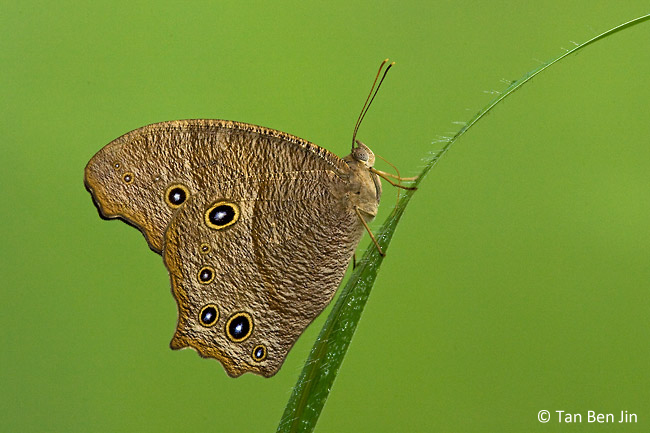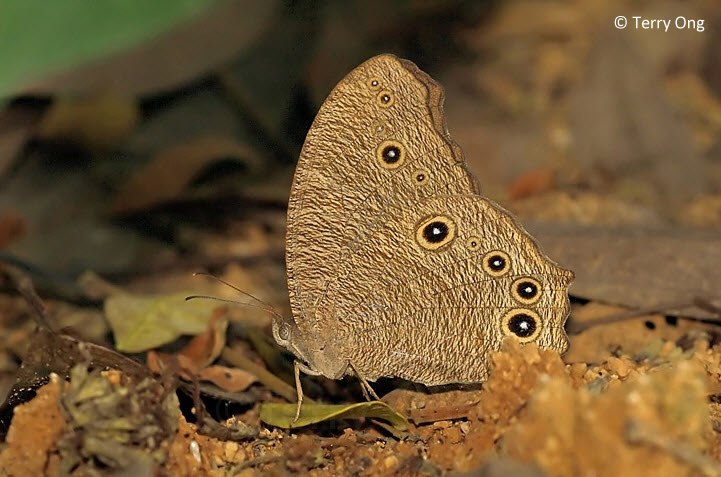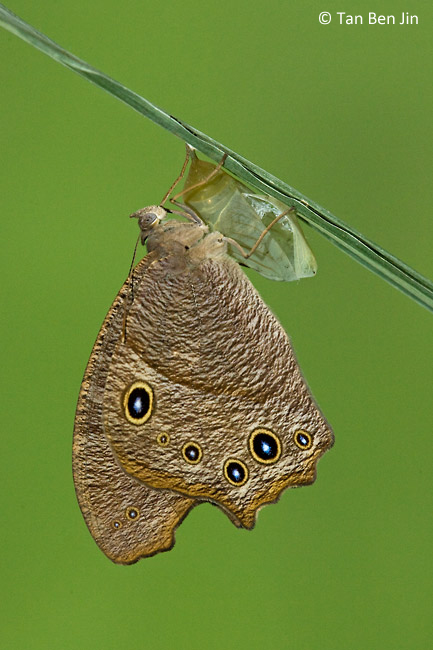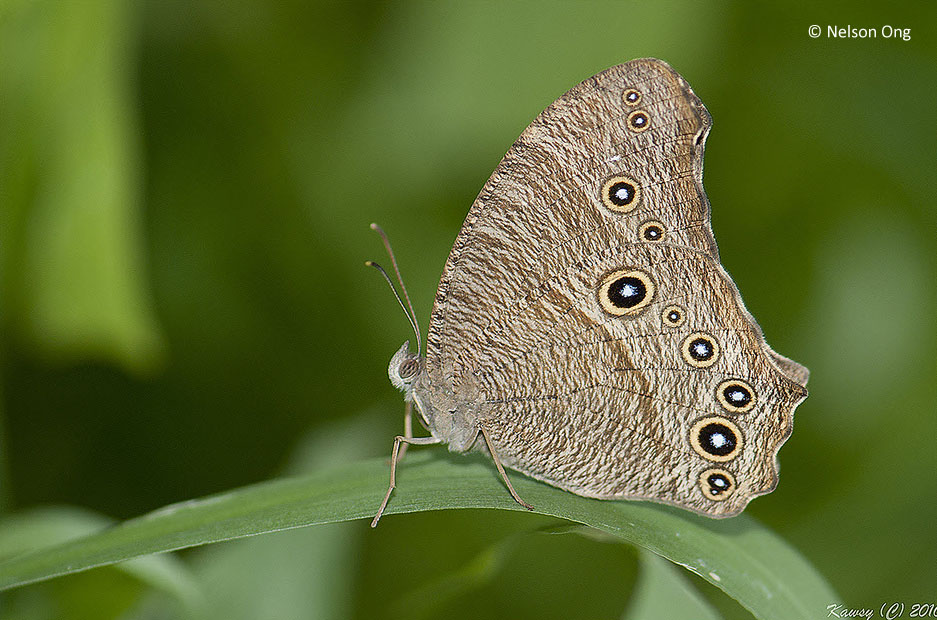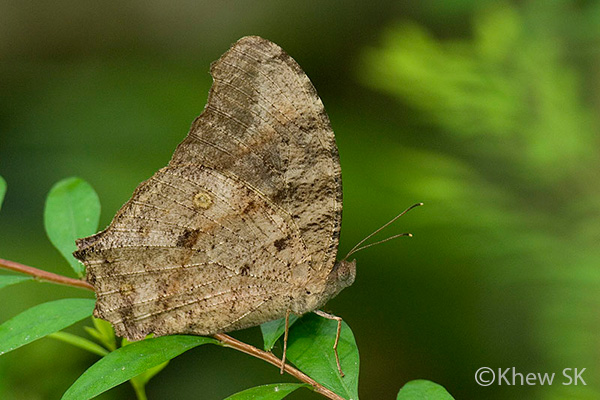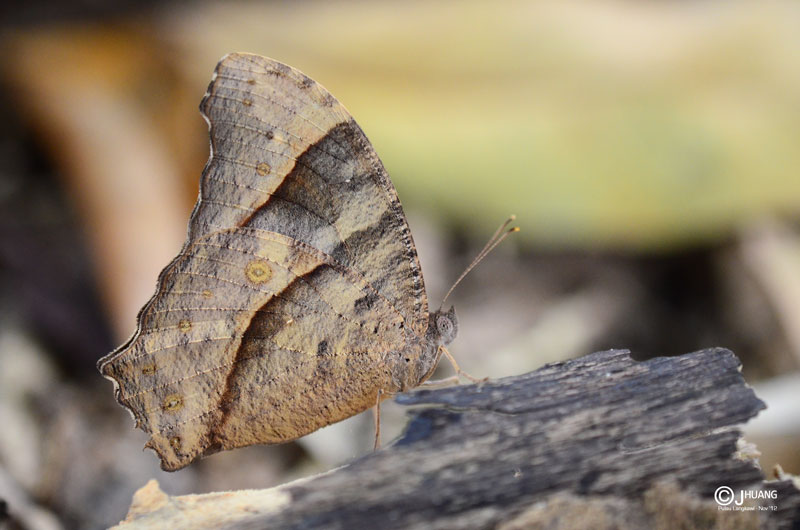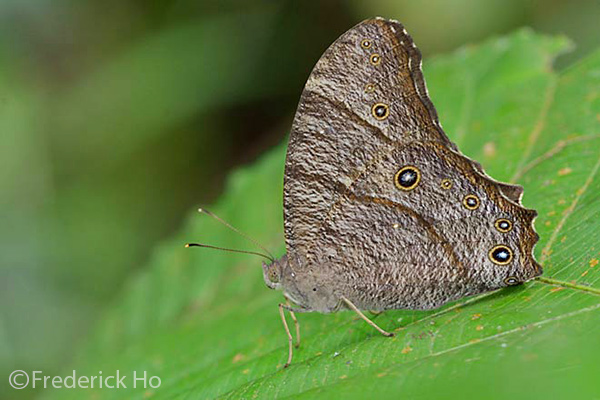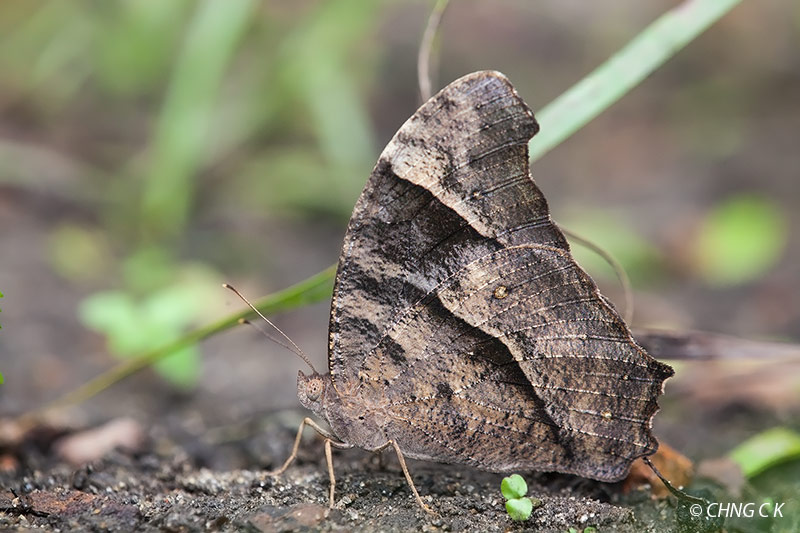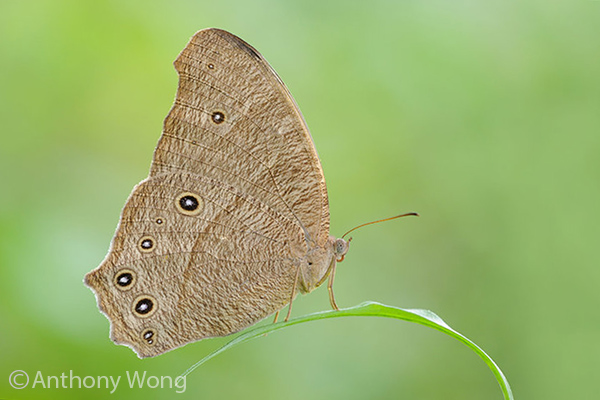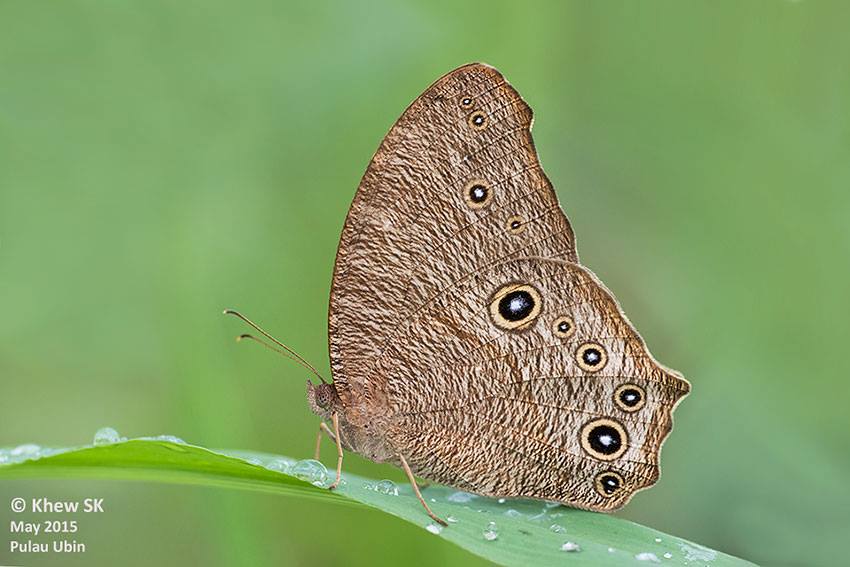Melanitis leda leda
Common Evening Brown
| Family: | Nymphalidae |
| Subfamily: | Satyrinae |
| Genus | Melanitis |
| Species: | leda |
| Subspecies: | leda |
| Common Name: | Common Evening Brown |
| Life History: | complete |
| Extant in countries: | •Thailand •Malaysia •Singapore |
| Hostplants: |
Description
The upperside is dark brown with a black subapical patch bearing two white spots and inwardly shaded with orange brown. The very variable underside is buff or grey, with fine dark brown striations. A submarginal row of yellow-ringed ocelli are usually found in the typical example. The variations in the undersides seem to be related to the wet and dry seasons in the region.
It is a medium-sized butterfly, often attaining a wingspan of 40 mm in most specimens.
Habitat & Habits
The Common Evening Brown is known to feed on padi. However, the food plant is substituted with Guinea Grass (Panicum maximum) here in Singapore, where padi is not grown.
The butterflies usually fly at dawn and shortly before dusk and are not normally seen during the day, except when disturbed.
Other Observations
To be detailed.
Early Stages
Refer to the ButterflyCircle's blog article - Life History of the Common Evening Brown.
Further Reading
To be detailed.

